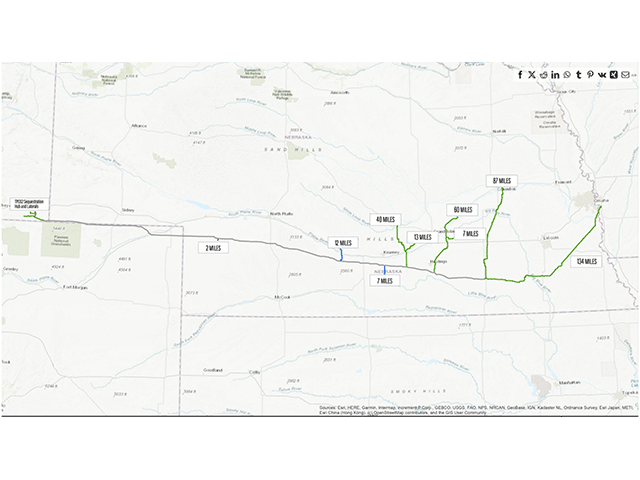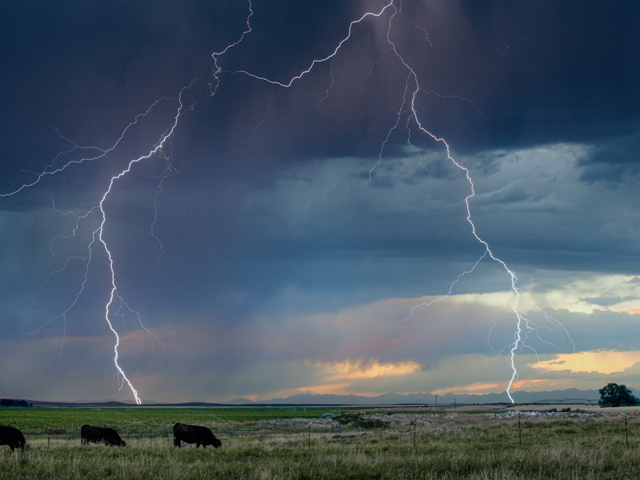Ask the Vet
Lightning Strikes Common Cause of Cattle Deaths
QUESTION:
We found a cow dead in the middle of the pasture, with no signs of struggle. She was badly bloated. All of the other cows in the pasture were fine. We did have a thunderstorm the night before we found her, but there is also a good bit of clover in this pasture. She was at least 100 yards from a tree or a fence line. Is there some way to know for sure what killed her?
P[L1] D[0x0] M[300x250] OOP[F] ADUNIT[] T[]
ANSWER:
Physical signs on the carcass or the environment are thought to be present in greater than 90% of cases of death from lighting. This can include what has been described as linear singe marks, especially on the insides of the legs. There is also often damage to a tree, or a fence pole, or there is disturbed ground. There is almost never any sign of a struggle.
Death from a lightning strike is almost always instantaneous. Cattle may have grass in their mouth, normal rumen content and fecal material.
In these lightning strike cases, rigor mortis quickly sets in and passes. Rumen distension is from free gas, rather than the frothy bloat commonly seen from clovers and other bloat-inducing forages.
In the case of insured animals, always take pictures at the site of death. An examination of the cattle prior to moving may be helpful. Necropsy, either by your local veterinarian or at a state diagnostic lab, can be helpful if done very soon after death, but the carcass degenerates quickly.
Common findings at necropsy include poorly clotted or unclotted blood, hemorrhagic marks and/or blood clots in the trachea, nasal turbinates and sinuses.
Lungs of cattle killed by lightning are not compressed as they typically are with bloat. The lungs, liver, kidney and other organs are congested with bloody material and have hemorrhagic areas on their surfaces. Poorly clotted blood tends to pool in the extremities, especially the head, neck, front legs and, to a lesser extent, the rear legs.
In your case, I would also recommend contacting your local USDA Farm Services Agency. The Livestock Indemnity Program or (LIP) provides assistance to producers in the event of livestock deaths that exceed normal mortality rates from eligible disaster events such as hurricanes, floods, blizzards, wildfires, tornados, lightning, disease, extreme heat, extreme cold and earthquakes.
(c) Copyright 2021 DTN, LLC. All rights reserved.







